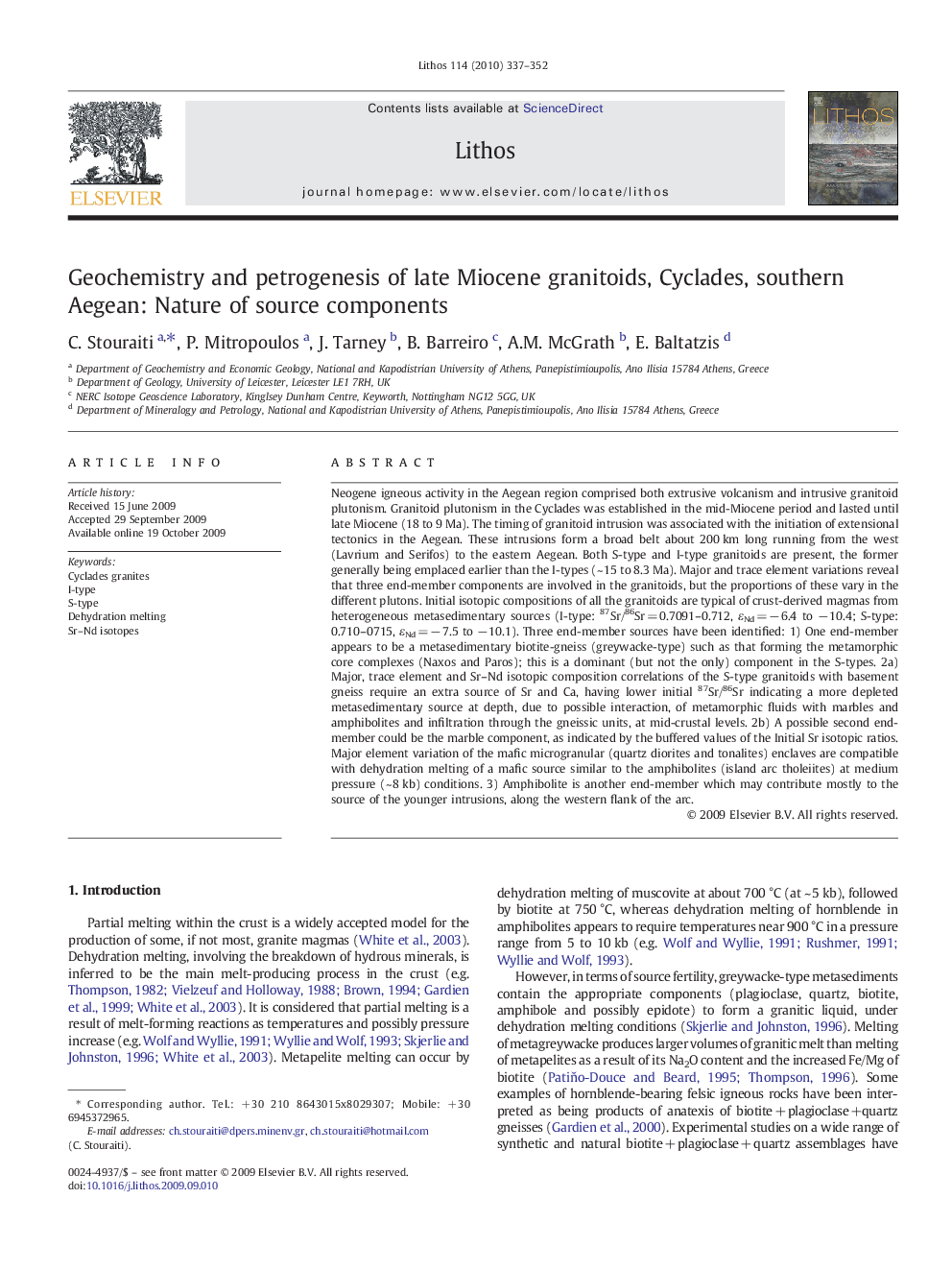| کد مقاله | کد نشریه | سال انتشار | مقاله انگلیسی | نسخه تمام متن |
|---|---|---|---|---|
| 4717159 | 1638736 | 2010 | 16 صفحه PDF | دانلود رایگان |

Neogene igneous activity in the Aegean region comprised both extrusive volcanism and intrusive granitoid plutonism. Granitoid plutonism in the Cyclades was established in the mid-Miocene period and lasted until late Miocene (18 to 9 Ma). The timing of granitoid intrusion was associated with the initiation of extensional tectonics in the Aegean. These intrusions form a broad belt about 200 km long running from the west (Lavrium and Serifos) to the eastern Aegean. Both S-type and I-type granitoids are present, the former generally being emplaced earlier than the I-types (~ 15 to 8.3 Ma). Major and trace element variations reveal that three end-member components are involved in the granitoids, but the proportions of these vary in the different plutons. Initial isotopic compositions of all the granitoids are typical of crust-derived magmas from heterogeneous metasedimentary sources (I-type: 87Sr/86Sr = 0.7091–0.712, εNd = − 6.4 to − 10.4; S-type: 0.710–0715, εNd = − 7.5 to − 10.1). Three end-member sources have been identified: 1) One end-member appears to be a metasedimentary biotite-gneiss (greywacke-type) such as that forming the metamorphic core complexes (Naxos and Paros); this is a dominant (but not the only) component in the S-types. 2a) Major, trace element and Sr–Nd isotopic composition correlations of the S-type granitoids with basement gneiss require an extra source of Sr and Ca, having lower initial 87Sr/86Sr indicating a more depleted metasedimentary source at depth, due to possible interaction, of metamorphic fluids with marbles and amphibolites and infiltration through the gneissic units, at mid-crustal levels. 2b) A possible second end-member could be the marble component, as indicated by the buffered values of the Initial Sr isotopic ratios. Major element variation of the mafic microgranular (quartz diorites and tonalites) enclaves are compatible with dehydration melting of a mafic source similar to the amphibolites (island arc tholeiites) at medium pressure (~ 8 kb) conditions. 3) Amphibolite is another end-member which may contribute mostly to the source of the younger intrusions, along the western flank of the arc.
Journal: Lithos - Volume 114, Issues 3–4, February 2010, Pages 337–352